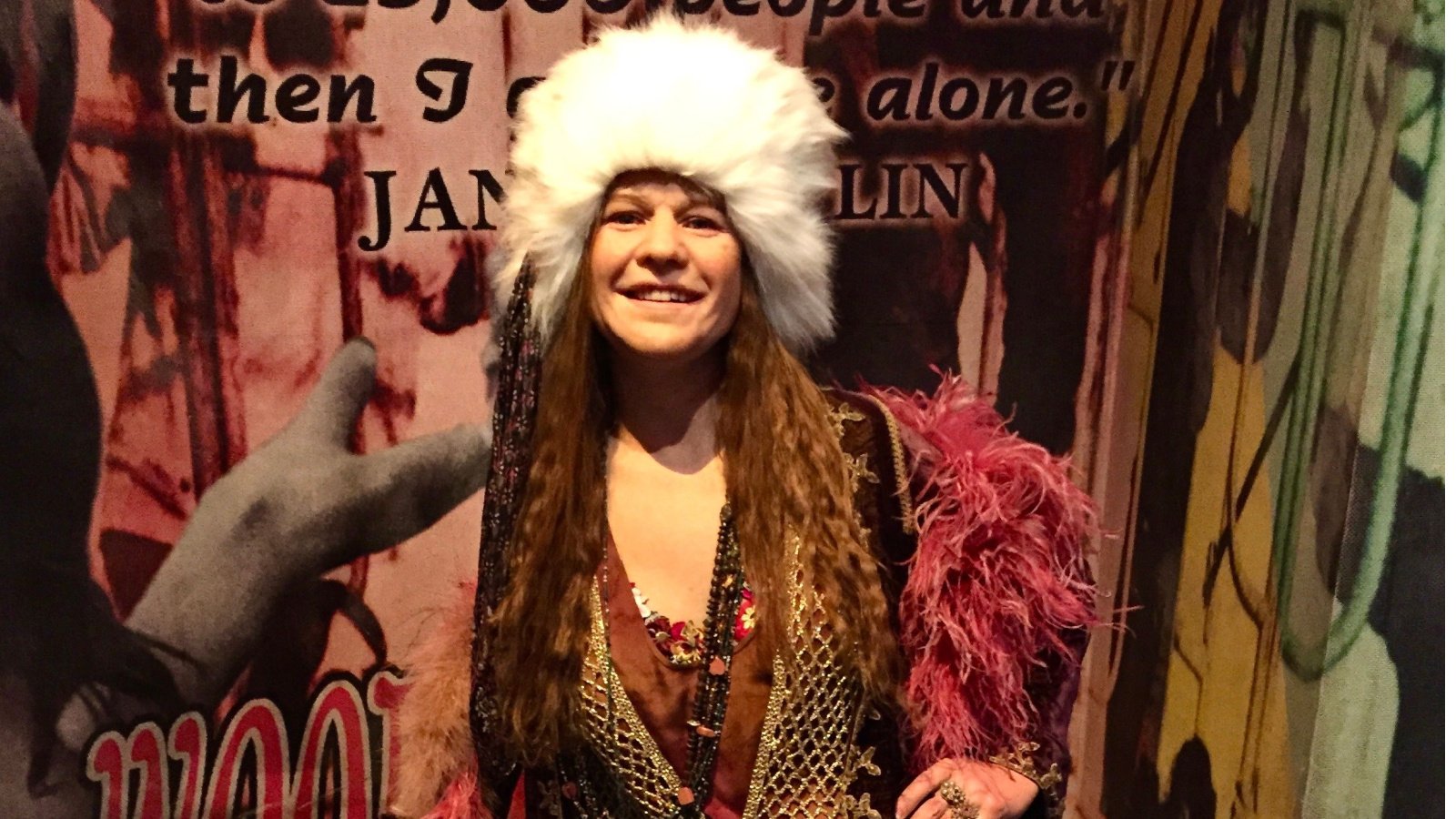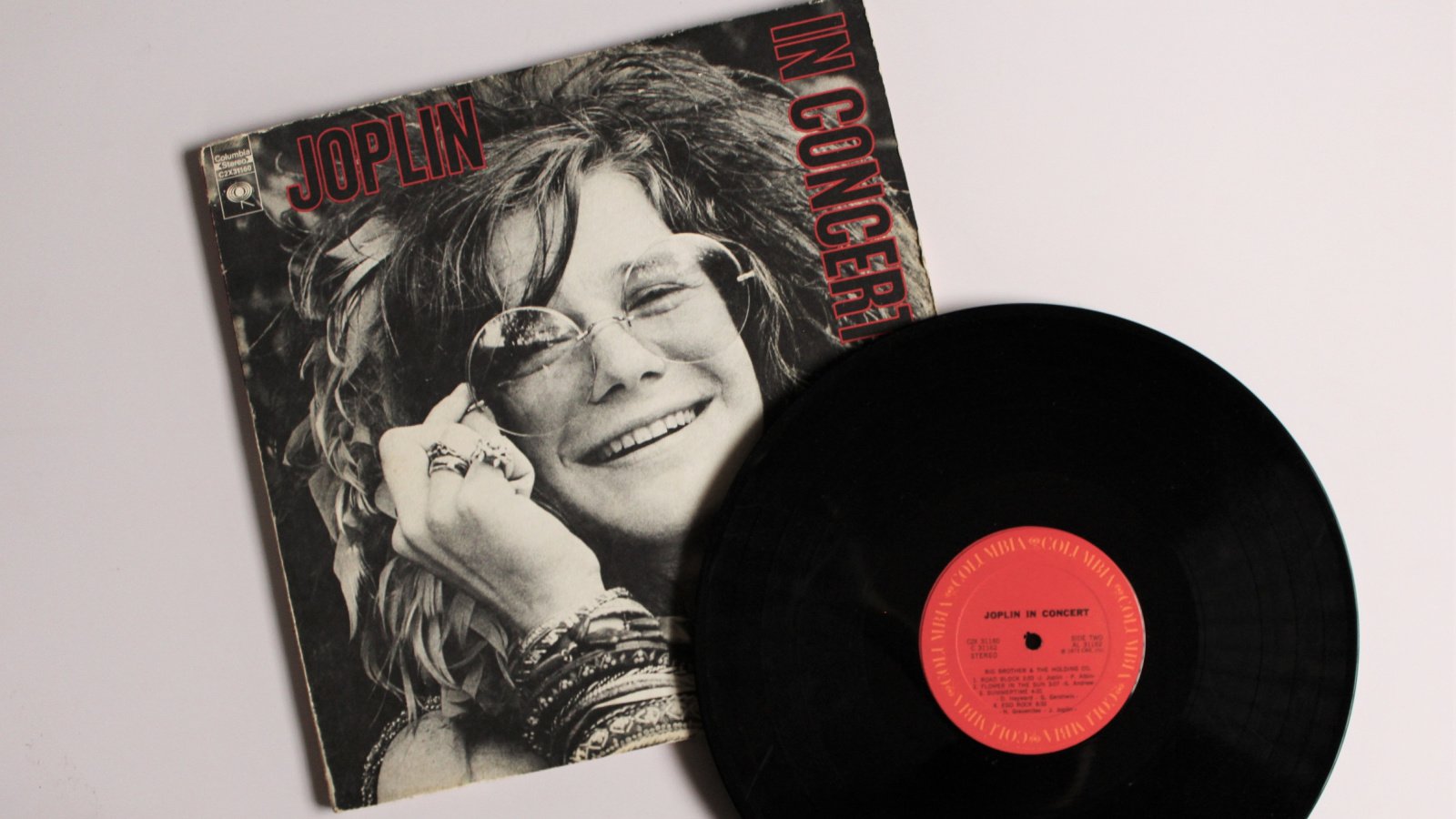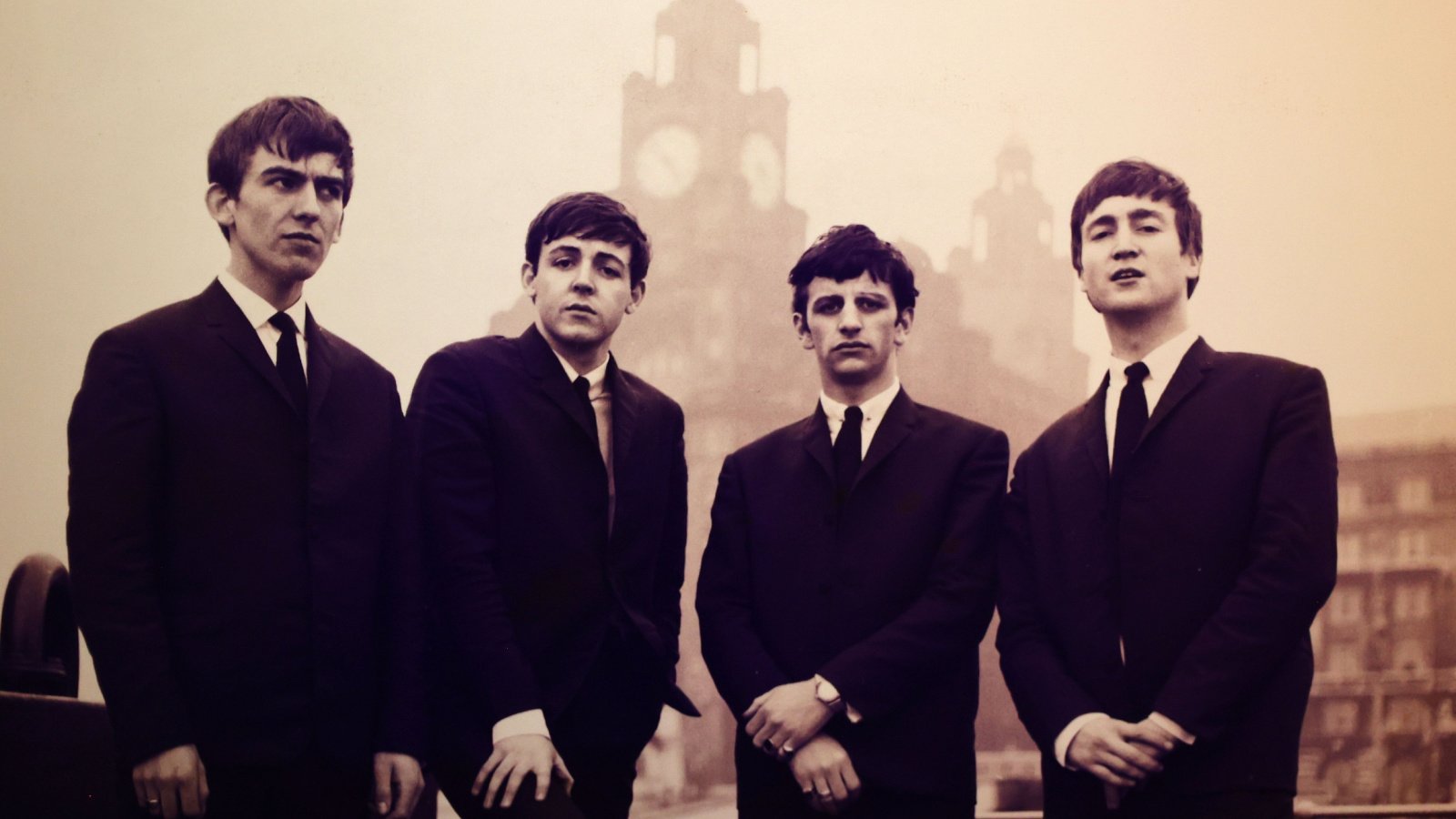The 1960s was a decade of transformative change and unforgettable moments, which redefined the boundaries of music, culture, and freedom. The decade’s legacy still resonates today. But what made growing up during this time period truly unique?
Music Revolution

The ’60s was a time when bands like The Beatles and The Rolling Stones changed music forever, introducing new sounds and messages. This era gave rise to music festivals that are still celebrated today.
Cultural Shifts

This decade was marked by significant cultural shifts, from the civil rights movement to the feminist wave. The ’60s laid the groundwork for a more inclusive society. It was a time when voices demanding change became too loud to ignore.
Space Exploration

The ’60s was synonymous with the space race and culminated in mankind’s first moon landing in 1969. This era of exploration expanded our horizons and made the universe feel within reach. It was a period when anything seemed possible.
Fashion Freedom

Fashion in the ’60s broke away from the conservative styles of the previous decade. With the introduction of miniskirts, bell-bottoms, and tie-dye, personal expression through clothing became the norm. This era celebrated individuality and freedom in a way never seen before.
Economic Prosperity

The post-war boom created an era of unprecedented economic prosperity. Jobs were plentiful, and the middle class flourished, allowing families more leisure time and disposable income. This prosperity laid the foundation for the consumer culture we know today.
Social Liberation

The ’60s was a time of social liberation, with movements challenging societal norms around sex, marriage, and authority. The birth control pill, introduced in this era, played a pivotal role in women’s liberation, giving them control over their reproductive rights.
Environmental Awareness

The environmental movement gained traction in the ’60s, leading to the first Earth Day in 1970. This decade marked the beginning of a global conversation about the importance of conservation and environmental protection. It was a time when people started to take notice of their impact on the planet.
Technological Innovations

This decade saw rapid technological advancements, from the development of the personal computer to the introduction of color television. These innovations drastically changed the way people lived, worked, and entertained themselves.
Global Awareness

The ’60s brought the world closer together through advancements in communication and transportation. The global coverage of significant events, like the Vietnam War, sparked international awareness and empathy, making the world feel smaller and more connected.
The Counter-Culture Movement

The counter-culture movement of the ’60s, with its emphasis on peace, love, and community, challenged the traditional values of the time. It was a period of exploration that encouraged questioning and self-discovery.
Educational Reform

The decade saw a push towards more progressive education systems, with a focus on creativity and critical thinking. This shift aimed to prepare a new generation to think differently and solve the problems of a rapidly changing world.
Political Activism

The ’60s was defined by a surge in political activism, with young people leading the charge for change. From anti-war protests to civil rights marches, this decade proved that collective action could influence government and policy.
Iconic Television and Film

This era brought us some of the most iconic television shows and films that are still beloved today. From Star Trek promoting diversity and exploration to The Graduate capturing the generational divide, the ’60s was a golden era for Hollywood.
Sports Heroes

The ’60s saw the rise of sports figures who were not just athletes but cultural icons. Muhammad Ali, for instance, transcended boxing to become a symbol of resilience and political activism.
The Youthquake

This term, coined in the ’60s, describes the significant impact of youth culture on fashion, music, and attitudes. It was a time when the ideas and trends of the young became mainstream, driving societal changes.
Psychedelic Exploration

The use and cultural acceptance of psychedelic drugs in the ’60s led to an exploration of consciousness that influenced music, art, and literature. This exploration opened new ways of thinking and sparked creativity across various fields.
Communal Living

The rise of communes and collective living situations reflected the era’s emphasis on community and shared values. These spaces served as hubs for creativity, activism, and a rejection of materialistic society.
The Beat Generation’s Influence

Though the Beat Generation emerged in the ’50s, their influence peaked in the ’60s, inspiring a generation to challenge societal norms and explore alternative lifestyles. Their literature and philosophy had a lasting impact.
Innovations in Art

The ’60s art scene was vibrant and revolutionary, with movements like pop art and minimalism challenging traditional notions of what art could be. Artists like Andy Warhol and Roy Lichtenstein brought popular culture into the gallery, making art accessible to all.
The Rise of Consumer Culture

The ’60s saw the birth of modern consumer culture, with the proliferation of advertisements and the creation of iconic brands. This era defined consumerism as we know it today, with a focus on individuality and choice.
Increased Mobility

The availability of affordable cars and the expansion of the highway system revolutionized travel, making it possible for families to explore and move with greater ease. This mobility contributed to a sense of freedom and adventure.
The Folk Music Revival

Folk music experienced a revival in the ’60s, with artists like Bob Dylan and Joan Baez using their music to comment on social issues. This genre became a powerful tool for protest and storytelling.
Breakthrough in Civil Rights

The ’60s witnessed landmark legislation ending segregation and ensuring voting rights. It was a decade of hard-fought battles that paved the way for a more equitable and just society.









https://semaglupharm.shop/# semaglutide stomach pain
https://semaglupharm.com/# semaglutide vs compounded semaglutide
atorvastatin cause ed: Lipi Pharm – Lipi Pharm
https://semaglupharm.com/# SemagluPharm
rybelsus for weight loss reviews: SemagluPharm – SemagluPharm
https://semaglupharm.com/# Semaglu Pharm
Predni Pharm: order prednisone online canada – Predni Pharm
http://semaglupharm.com/# Semaglu Pharm
http://prednipharm.com/# PredniPharm
Order rosuvastatin online legally: Crestor Pharm – Crestor home delivery USA
https://semaglupharm.com/# Semaglutide tablets without prescription
SemagluPharm: SemagluPharm – SemagluPharm
https://semaglupharm.shop/# semaglutide and fatigue
pcos semaglutide: max dose of semaglutide – Semaglu Pharm
https://prednipharm.com/# PredniPharm
https://semaglupharm.com/# how to get semaglutide
LipiPharm: when to take atorvastatin with food – LipiPharm
https://semaglupharm.com/# Semaglu Pharm
semaglutide mechanism of action: tirzepatide vs semaglutide dosage for weight loss – FDA-approved Rybelsus alternative
http://semaglupharm.com/# FDA-approved Rybelsus alternative
https://semaglupharm.com/# Semaglutide tablets without prescription
LipiPharm Discreet shipping for Lipitor Lipi Pharm
CrestorPharm: Safe online pharmacy for Crestor – side effects of crestor 10 mg tablets
https://semaglupharm.com/# Affordable Rybelsus price
Crestor Pharm: п»їBuy Crestor without prescription – No doctor visit required statins
https://semaglupharm.com/# Semaglu Pharm
https://semaglupharm.shop/# Semaglu Pharm
Affordable Rybelsus price: п»їBuy Rybelsus online USA – SemagluPharm
http://semaglupharm.com/# Affordable Rybelsus price
https://semaglupharm.shop/# Semaglu Pharm
Lipi Pharm: Safe atorvastatin purchase without RX – LipiPharm
http://crestorpharm.com/# CrestorPharm
https://semaglupharm.com/# Order Rybelsus discreetly
Meds From Mexico: mexican pharmaceuticals online – Meds From Mexico
Meds From Mexico: Meds From Mexico – medicine in mexico pharmacies
Meds From Mexico purple pharmacy mexico price list Meds From Mexico
https://medsfrommexico.shop/# medication from mexico pharmacy
Meds From Mexico: medication from mexico pharmacy – Meds From Mexico
top 10 online pharmacy in india: India Pharm Global – India Pharm Global
https://medsfrommexico.com/# buying prescription drugs in mexico online
http://indiapharmglobal.com/# pharmacy website india
precription drugs from canada: escrow pharmacy canada – best canadian online pharmacy
northwest canadian pharmacy: medication canadian pharmacy – is canadian pharmacy legit
https://medsfrommexico.com/# medication from mexico pharmacy
canada drugs reviews canada drug pharmacy my canadian pharmacy reviews
India Pharm Global: India Pharm Global – India Pharm Global
https://medsfrommexico.shop/# buying prescription drugs in mexico online
Meds From Mexico: Meds From Mexico – Meds From Mexico
https://medsfrommexico.shop/# Meds From Mexico
India Pharm Global п»їlegitimate online pharmacies india india pharmacy
top 10 pharmacies in india: buy medicines online in india – top 10 pharmacies in india
mexican mail order pharmacies: Meds From Mexico – reputable mexican pharmacies online
https://canadapharmglobal.shop/# canadian pharmacy world
https://medsfrommexico.shop/# Meds From Mexico
http://canadapharmglobal.com/# my canadian pharmacy
buying drugs from canada: canada pharmacy online – canada drugs
http://canadapharmglobal.com/# canadian discount pharmacy
the canadian drugstore: Canada Pharm Global – canadian online pharmacy
https://indiapharmglobal.com/# India Pharm Global
https://medsfrommexico.com/# purple pharmacy mexico price list
Meds From Mexico: Meds From Mexico – Meds From Mexico
https://medsfrommexico.shop/# Meds From Mexico
canadian pharmacy uk delivery: canadian pharmacy reviews – canadian pharmacies comparison
farmacias en espaГ±a: Papa Farma – brentan crema sin receta
https://papafarma.shop/# biretix gel limpiador opiniones
https://papafarma.com/# farmacia 24 horas vigo
butirrisan a cosa serve: bactopral a cosa serve – augmentin online
https://raskapotek.shop/# Rask Apotek
apotek termometer: kan man sola med feber – mina receot
bilig Rask Apotek apotek ГҐpent pГҐ sГёndag
Papa Farma: famrmacia – Papa Farma
https://papafarma.shop/# Papa Farma
1000 farmacie sconto: dr max tempi di consegna – EFarmaciaIt
http://papafarma.com/# Papa Farma
https://efarmaciait.com/# EFarmaciaIt
opiniones supradyn: aboca group – farmacias sevilla
bestill reseptvarer pГҐ nett: Rask Apotek – Rask Apotek
EFarmaciaIt EFarmaciaIt EFarmaciaIt
https://svenskapharma.shop/# hitta medicin
sildenafilo 50 precio: farmacia cerca de mo – dodot sensitive talla 4 plus
http://efarmaciait.com/# EFarmaciaIt
kan man hämta ut recept på vilket apotek som helst Svenska Pharma simetikon apotek
http://svenskapharma.com/# Svenska Pharma
Rask Apotek: Rask Apotek – Rask Apotek
https://svenskapharma.com/# Svenska Pharma
http://raskapotek.com/# Rask Apotek
aktivt kol apotek: skГ¤ggolja apotek – pottrГ¤ning pГҐ 3 dagar gratis
https://papafarma.com/# Papa Farma
https://svenskapharma.shop/# mГҐttband app
Papa Farma: productos de parafarmacia – thc med las palmas
https://efarmaciait.shop/# a cosa serve la crema ovixan
augmentin 1mg: farmae’ ordine – prisma medicinale a cosa serve
https://efarmaciait.shop/# EFarmaciaIt
https://svenskapharma.shop/# Svenska Pharma
forskrift om rekvirering og utlevering av legemidler fra apotek: laksantia apotek – Rask Apotek
https://efarmaciait.com/# EFarmaciaIt
https://papafarma.shop/# Papa Farma
thermometer apotek: munsГҐr stift – vГҐrtor hund bilder
https://papafarma.shop/# Papa Farma
https://pharmaconnectusa.shop/# online pharmacy abilify
medicaties: Medicijn Punt – online apotheek goedkoper
http://pharmaconnectusa.com/# nabp pharmacy viagra
https://pharmajetzt.com/# gГјnstige arzneimittel
Pharma Connect USA: kroger pharmacy lisinopril – PharmaConnectUSA
https://pharmajetzt.com/# PharmaJetzt
pharma online: MedicijnPunt – online apotheek zonder recept ervaringen
http://pharmajetzt.com/# Pharma Jetzt
em produits de santГ© exemple ordonnance pansement Pharma Confiance
https://pharmaconnectusa.com/# PharmaConnectUSA
MedicijnPunt: med apotheek – MedicijnPunt
PharmaJetzt: luitpold apotheke bad steben – shop spotheke
https://pharmaconfiance.com/# ml kids nice
online pharmacy amoxicillin no prescription: Pharma Connect USA – PharmaConnectUSA
mГ©tronidazole chat: avis forte pharma – pharmacie web
https://pharmajetzt.shop/# PharmaJetzt
http://pharmajetzt.com/# apotheke billig
online pharmacy in india: charles raines pharmacy winston-salem nc early drug store – generic viagra online pharmacy no prescription
http://pharmajetzt.com/# Pharma Jetzt
http://medicijnpunt.com/# medicatie bestellen
Pharma Connect USA: Pharma Connect USA – Pharma Connect USA
http://medicijnpunt.com/# pillen bestellen
http://medicijnpunt.com/# medicijen
Pharma Connect USA: Pharma Connect USA – PharmaConnectUSA
http://medicijnpunt.com/# medicatie bestellen apotheek
Pharma Jetzt: PharmaJetzt – apotheje online
https://pharmajetzt.shop/# Pharma Jetzt
https://pharmajetzt.com/# Pharma Jetzt
PharmaConnectUSA: longs drug store pharmacy – Pharma Connect USA
http://pharmajetzt.com/# online apothke
Pharma Connect USA: online pharmacy – PharmaConnectUSA
http://medicijnpunt.com/# MedicijnPunt
https://pharmajetzt.com/# PharmaJetzt
dispensing methotrexate pharmacy: Pharma Connect USA – Pharma Connect USA
safe online pharmacy reviews: Pharma Connect USA – cialis online review online pharmacy
https://pharmajetzt.shop/# Pharma Jetzt
https://pharmaconfiance.shop/# pharma o
https://medicijnpunt.com/# apotheek spanje online
0nline apotheke: Pharma Jetzt – medpex online apotheke
https://pharmaconnectusa.shop/# PharmaConnectUSA
best generic viagra pharmacy: cheap pharmacy cialis – Levitra Soft
https://pharmaconfiance.com/# fucidine pommade sans ordonnance
Pharma Confiance: Pharma Confiance – Pharma Confiance
https://pharmaconnectusa.shop/# flonase pharmacy
https://pharmaconnectusa.shop/# isotretinoin indian pharmacy
Pharma Jetzt: online apotheke schnelle lieferung – PharmaJetzt
https://pharmaconfiance.com/# pharmacie de garde aujourd’hui strasbourg
PharmaJetzt: Pharma Jetzt – PharmaJetzt
http://pharmaconfiance.com/# pharmacie du marchГ©
https://pharmaconfiance.com/# Pharma Confiance
Pharma Jetzt: shopa – Pharma Jetzt
https://pharmajetzt.com/# PharmaJetzt
medicijn recept: MedicijnPunt – MedicijnPunt
https://medicijnpunt.com/# mijn medicijn.nl
https://pharmaconnectusa.com/# PharmaConnectUSA
nearby pharmacy store: Pharma Connect USA – best online pharmacy india
https://pharmajetzt.shop/# online apothee
PharmaJetzt: klack 95 – Pharma Jetzt
https://pharmaconnectusa.com/# PharmaConnectUSA
https://pharmajetzt.shop/# luitpold apotheke würzburg
Pharma Confiance: Pharma Confiance – Pharma Confiance
https://pharmajetzt.shop/# PharmaJetzt
farma online: Medicijn Punt – medicijnen zonder recept kopen
http://pharmaconnectusa.com/# celebrex pharmacy coupon
http://medicijnpunt.com/# MedicijnPunt
de online apotheek: medicijnen kopen online – Medicijn Punt
Pharma Confiance Pharma Confiance Pharma Confiance
PharmaJetzt: online apotheke bad steben – medikamente gГјnstig bestellen
http://pharmajetzt.com/# Pharma Jetzt
https://medicijnpunt.com/# MedicijnPunt
PharmaConnectUSA: PharmaConnectUSA – can you buy viagra pharmacy
https://pharmajetzt.com/# sanicare apotheke online bestellen
nizoral shampoo pharmacy: Pharma Connect USA – Pharma Connect USA
https://pharmaconnectusa.shop/# advanced rx pharmacy
Medicijn Punt: Medicijn Punt – medicijnen online bestellen
https://pharmaconnectusa.com/# Pharma Connect USA
shop a: onlien apotheke – online apothee
http://pharmaconfiance.com/# Pharma Confiance
deutschland apotheke: Pharma Jetzt – apotal apotheke online shop
http://pharmajetzt.com/# Pharma Jetzt
http://pharmajetzt.com/# PharmaJetzt
medicament flagyl: Pharma Confiance – 300 g en cl
PharmaJetzt: PharmaJetzt – Pharma Jetzt
https://pharmaconfiance.com/# Pharma Confiance
pharmacie de nuit montpellier: pharmacie gragnague – kronalis 20 mg
https://pharmajetzt.com/# Pharma Jetzt
https://medicijnpunt.shop/# Medicijn Punt
online apptheke: Pharma Jetzt – apotheke onlineshop
http://pharmaconnectusa.com/# river pharmacy baclofen
Pharma Connect USA: pharmacy choice ibuprofen – online pharmacy generic viagra
http://medicijnpunt.com/# online medicijnen bestellen zonder recept
canada drugs: CanRx Direct – canadadrugpharmacy com
https://canrxdirect.shop/# canadian online drugs
IndiMeds Direct: buy prescription drugs from india – IndiMeds Direct
IndiMeds Direct: top online pharmacy india – IndiMeds Direct
https://indimedsdirect.shop/# cheapest online pharmacy india
canadian pharmacy 24: vipps approved canadian online pharmacy – canadian drug pharmacy
https://canrxdirect.shop/# canadianpharmacymeds
canadian compounding pharmacy: canadianpharmacymeds com – canadian online pharmacy
https://tijuanameds.shop/# TijuanaMeds
canadian pharmacy in canada CanRx Direct canadian pharmacy 365
canadian pharmacy 24 com: onlinecanadianpharmacy 24 – vipps canadian pharmacy
http://tijuanameds.com/# buying from online mexican pharmacy
IndiMeds Direct IndiMeds Direct mail order pharmacy india
http://tijuanameds.com/# buying prescription drugs in mexico online
canadian pharmacy uk delivery: canada drugs online – legal canadian pharmacy online
https://indimedsdirect.shop/# IndiMeds Direct
https://indimedsdirect.shop/# IndiMeds Direct
https://canrxdirect.com/# certified canadian international pharmacy
https://canrxdirect.com/# canadian pharmacy world reviews
IndiMeds Direct: indianpharmacy com – india pharmacy mail order
https://tijuanameds.shop/# TijuanaMeds
legitimate canadian pharmacies: canadian pharmacy online – my canadian pharmacy review
https://canrxdirect.com/# canadian pharmacy ed medications
TijuanaMeds: TijuanaMeds – mexican mail order pharmacies
https://enclomiphenebestprice.shop/# enclomiphene online
https://farmaciaasequible.com/# cómo llegar a parque alcosa
enclomiphene buy: enclomiphene buy – enclomiphene price
sildenafil mujeres: Farmacia Asequible – donde puedo comprar ozempic
Farmacia Asequible: Farmacia Asequible – bb cream isdin opiniones
http://rxfreemeds.com/# no rx online pharmacy
RxFree Meds: RxFree Meds – RxFree Meds
https://enclomiphenebestprice.com/# enclomiphene for men
Farmacia Asequible: Farmacia Asequible – Farmacia Asequible
https://rxfreemeds.shop/# RxFree Meds
https://enclomiphenebestprice.com/# enclomiphene testosterone
world pharmacy store reviews: RxFree Meds – RxFree Meds
https://rxfreemeds.com/# RxFree Meds
RxFree Meds: motilium online pharmacy – RxFree Meds
https://rxfreemeds.shop/# RxFree Meds
precio ozempic 0 50: Farmacia Asequible – Farmacia Asequible
https://rxfreemeds.com/# RxFree Meds
https://rxfreemeds.shop/# best online international pharmacies
https://enclomiphenebestprice.com/# enclomiphene citrate
farma 10 opiniones: Farmacia Asequible – parafarmacia online.com
http://rxfreemeds.com/# RxFree Meds
RxFree Meds: best online pharmacy to buy cialis – RxFree Meds
https://farmaciaasequible.shop/# Farmacia Asequible
RxFree Meds: new zealand pharmacy motilium – RxFree Meds
https://farmaciaasequible.com/# Farmacia Asequible
enclomiphene buy: enclomiphene citrate – enclomiphene best price
https://rxfreemeds.com/# RxFree Meds
Farmacia Asequible: celestone comprar – farmacias abiertas en vigo
farlacia: Farmacia Asequible – parafarmacia barata
https://rxfreemeds.shop/# what pharmacy sells azithromycin
enclomiphene buy: enclomiphene price – enclomiphene for men
https://farmaciaasequible.com/# Farmacia Asequible
https://enclomiphenebestprice.com/# enclomiphene buy
farmacia en lГnea: Farmacia Asequible – ecommerce farmacia
Farmacia Asequible: iraltone forte prospecto – parches natura plus
http://rxfreemeds.com/# RxFree Meds
viagra-american trust pharmacy: mexican online pharmacy reviews – RxFree Meds
Farmacia Asequible: Farmacia Asequible – farmacia web
enclomiphene citrate: enclomiphene online – enclomiphene testosterone
http://enclomiphenebestprice.com/# enclomiphene for men
http://rxfreemeds.com/# RxFree Meds
asda pharmacy cialis: boots pharmacy propecia – RxFree Meds
https://rxfreemeds.com/# RxFree Meds
legit canadian online pharmacy: MediSmart Pharmacy – reliable canadian pharmacy
https://meximedsexpress.shop/# MexiMeds Express
india pharmacy mail order: reputable indian pharmacies – world pharmacy india
online pharmacy india: Online medicine order – india pharmacy
http://medismartpharmacy.com/# pharmacy world rx
https://indomedsusa.com/# india online pharmacy
publix pharmacy amoxicillin: MediSmart Pharmacy – french pharmacy online store
canadian pharmacy: MediSmart Pharmacy – online canadian pharmacy review
https://indomedsusa.shop/# reputable indian online pharmacy
https://indomedsusa.shop/# IndoMeds USA
https://meximedsexpress.shop/# MexiMeds Express
mexican drugstore online: mexico drug stores pharmacies – MexiMeds Express
http://indomedsusa.com/# Online medicine home delivery
MexiMeds Express: MexiMeds Express – MexiMeds Express
https://medismartpharmacy.com/# optimal rx pharmacy
http://meximedsexpress.com/# mexican online pharmacies prescription drugs
pharmacies in canada that ship to the us: online pharmacy retin a – canadian pharmacy 24h com safe
https://indomedsusa.shop/# IndoMeds USA
mexico drug stores pharmacies: MexiMeds Express – MexiMeds Express
https://meximedsexpress.com/# MexiMeds Express
https://indomedsusa.shop/# IndoMeds USA
IndoMeds USA: Online medicine order – best online pharmacy india
http://meximedsexpress.com/# MexiMeds Express
canadian online drugs: Levaquin – legit canadian online pharmacy
http://indomedsusa.com/# india pharmacy mail order
https://meximedsexpress.com/# pharmacies in mexico that ship to usa
legal canadian pharmacy online: tri luma online pharmacy – canadian pharmacy store
buying prescription drugs in mexico online: buying prescription drugs in mexico online – mexican rx online
http://medismartpharmacy.com/# pharmacy rx one order status
http://meximedsexpress.com/# pharmacies in mexico that ship to usa
https://indomedsusa.com/# IndoMeds USA
https://medismartpharmacy.com/# misoprostol pharmacy
https://meximedsexpress.com/# MexiMeds Express
https://medismartpharmacy.com/# remedies rx pharmacy
http://indomedsusa.com/# IndoMeds USA
http://medismartpharmacy.com/# shoprite pharmacy
https://medismartpharmacy.com/# cytotec in malaysia pharmacy
https://pharmadirecte.com/# cialis sans ordonnance
farmaci per aumentare le difese immunitarie: silodosina 8 mg prezzo – foster polvere
https://clinicagaleno.shop/# ffp3 farmacia online
https://clinicagaleno.shop/# cialis comprar farmacia online
nux moschata neurologie PharmaDirecte sterdex ordonnance
https://pharmadirecte.shop/# serum la roche posay hyalu b5
https://ordinasalute.com/# deursil 450 generico prezzo
https://clinicagaleno.com/# farmacia online gastos de envio gratis
http://ordinasalute.com/# farmacia on line sicura
http://clinicagaleno.com/# vitaros farmacia online
https://pharmadirecte.com/# mycose pied pharmacie sans ordonnance
https://pharmadirecte.shop/# medicament pour arreter l’alcool sans ordonnance en pharmacie
https://ordinasalute.shop/# bactroban crema
https://pharmadirecte.shop/# gratte langue action
hГҐl i Г¶ronen apotek Snabb Apoteket apotek online fri frakt
eu apotek: senna te apotek – apotek plГҐster
http://snabbapoteket.com/# pipetter apotek
http://zorgpakket.com/# online pharmacy nl
sterilt vann apotek skanne fГёflekk apotek tissekladd apotek
fuktighetskrem apotek: Trygg Med – apotek pГҐ nett billigst
https://tryggmed.shop/# dansk apotek
sola med kokosolja SnabbApoteket köpa läkemedel på nätet
https://tryggmed.com/# apoteken
medicijnen online bestellen: pharma online – online medicijnen bestellen zonder recept
https://zorgpakket.shop/# apotheker medicatie
viktminskning tabletter apotek Snabb Apoteket beige hårfärg
nellikolje apotek: apotek deodorant – apotek pГҐ net
https://zorgpakket.com/# de apotheek
apotek gave armringer barn apotek blodtypetest apotek
https://zorgpakket.shop/# medicijnen bestellen bij apotheek
medicijnen op recept online bestellen: Medicijn Punt – recept medicijn
https://snabbapoteket.com/# ilningar engelska
homeopati apotek TryggMed fiber apotek
https://tryggmed.com/# destillert vann apotek
apotwa: mobiltelefon rea – apotek glidmedel
glycerin apotek SnabbApoteket apotek näringsdryck
http://snabbapoteket.com/# vilket apotek har snabbast leverans
MediMexicoRx: MediMexicoRx – buy cialis from mexico
https://medimexicorx.shop/# buying prescription drugs in mexico online
http://indiamedshub.com/# IndiaMedsHub
buy medicines online in india IndiaMedsHub top 10 pharmacies in india
buy antibiotics over the counter in mexico: MediMexicoRx – buy antibiotics over the counter in mexico
http://indiamedshub.com/# best india pharmacy
in store pharmacy priceline pharmacy xenical scripts rx pharmacy
india pharmacy: indian pharmacy paypal – Online medicine order
https://medimexicorx.shop/# mexican drugstore online
IndiaMedsHub: india pharmacy – online pharmacy india
https://medimexicorx.shop/# MediMexicoRx
generic drugs mexican pharmacy buy neurontin in mexico MediMexicoRx
MediMexicoRx: amoxicillin mexico online pharmacy – buy antibiotics over the counter in mexico
https://indiamedshub.shop/# Online medicine home delivery
ExpressCareRx: baclofen inhouse pharmacy – depo provera pharmacy
india pharmacy india pharmacy IndiaMedsHub
finasteride mexico pharmacy: order azithromycin mexico – buy from mexico pharmacy
https://medimexicorx.shop/# buying from online mexican pharmacy
https://medimexicorx.com/# MediMexicoRx
online shopping pharmacy india: rohypnol online pharmacy – inhouse pharmacy spironolactone
pharmacy website india IndiaMedsHub online shopping pharmacy india
http://expresscarerx.org/# gabapentin prices pharmacy
ativan online pharmacy: brooks pharmacy store – actos pharmacy
indian pharmacies safe buy medicines online in india indian pharmacy online
ExpressCareRx: ExpressCareRx – ExpressCareRx
https://expresscarerx.org/# rx america pharmacy help desk
https://expresscarerx.org/# blink online pharmacy
best india pharmacy: mail order pharmacy india – IndiaMedsHub
testosterone cream online pharmacy motilium uk pharmacy amoxicillin uk pharmacy
https://expresscarerx.online/# strattera indian pharmacy
MediMexicoRx: buy antibiotics from mexico – mexican pharmacy for americans
IndiaMedsHub: IndiaMedsHub – п»їlegitimate online pharmacies india
online pharmacy review ambien albertsons pharmacy cialis pharmacy pricing
https://expresscarerx.online/# tricare pharmacy online
https://indiamedshub.com/# IndiaMedsHub
abilify online pharmacy: cleocin online pharmacy – ExpressCareRx
https://expresscarerx.org/# buy viagra pharmacy 100mg
pharmacy website india IndiaMedsHub IndiaMedsHub
ExpressCareRx: ExpressCareRx – geodon online pharmacy
USA-safe Accutane sourcing: isotretinoin online – buy Accutane online
http://tadalafilfromindia.com/# Tadalafil From India
generic lexapro canada pharmacy: lexapro escitalopram – Lexapro for depression online
lexapro generic Lexapro for depression online Lexapro for depression online
https://zoloft.company/# generic sertraline
propecia for sale: Finasteride From Canada – Finasteride From Canada
Zoloft Company: Zoloft online pharmacy USA – Zoloft online pharmacy USA
generic isotretinoin purchase generic Accutane online discreetly buy Accutane online
https://zoloft.company/# Zoloft for sale
http://tadalafilfromindia.com/# Tadalafil From India
Cialis without prescription: buy Cialis online cheap – cost of tadalafil generic
generic isotretinoin: buy Accutane online – order isotretinoin from Canada to US
Tadalafil From India Tadalafil From India Tadalafil From India
https://finasteridefromcanada.shop/# Finasteride From Canada
tadalafil 100mg online: generic Cialis from India – cheap Cialis Canada
cheap Accutane: generic isotretinoin – buy Accutane online
https://finasteridefromcanada.com/# cheap Propecia Canada
Tadalafil From India Tadalafil From India Tadalafil From India
https://zoloft.company/# buy Zoloft online
tadalafil online no rx: Cialis without prescription – buy Cialis online cheap
buy Cialis online cheap: buy tadalafil online usa – buy Cialis online cheap
generic Finasteride without prescription [url=http://finasteridefromcanada.com/#]cheap Propecia Canada[/url] generic Finasteride without prescription
https://tadalafilfromindia.com/# Tadalafil From India
lexapro 20mg: Lexapro for depression online – lexapro online no prescription
https://zoloft.company/# purchase generic Zoloft online discreetly
Lexapro for depression online: lexapro online no prescription – lexapro buy
Finasteride From Canada cost of generic propecia price cheap Propecia Canada
https://zoloft.company/# Zoloft Company
Propecia for hair loss online: Propecia for hair loss online – generic Finasteride without prescription
buy Accutane online: Isotretinoin From Canada – buy Accutane online
https://lexapro.pro/# Lexapro for depression online
Finasteride From Canada cheap Propecia Canada cheap Propecia Canada
cheap Propecia Canada: cheap propecia without a prescription – Propecia for hair loss online
https://isotretinoinfromcanada.shop/# cheap Accutane
generic Finasteride without prescription: Propecia for hair loss online – cheap Propecia Canada
https://lexapro.pro/# generic brand for lexapro
Finasteride From Canada Finasteride From Canada generic Finasteride without prescription
cheap Cialis Canada: Tadalafil From India – Tadalafil From India
http://finasteridefromcanada.com/# cheap Propecia Canada
Cialis without prescription buy Cialis online cheap generic Cialis from India
buy propecia price: buy propecia without prescription – Finasteride From Canada
http://finasteridefromcanada.com/# cost of generic propecia online
https://zoloft.company/# buy Zoloft online without prescription USA
Lexapro for depression online: Lexapro for depression online – Lexapro for depression online
Lexapro for depression online buy lexapro online india lexapro generic over the counter
Lexapro for depression online: Lexapro for depression online – lexapro brand name
https://finasteridefromcanada.com/# cheap Propecia Canada
cheap Propecia Canada Propecia for hair loss online cost propecia tablets
cheap Propecia Canada: Finasteride From Canada – Finasteride From Canada
https://zoloft.company/# cheap Zoloft
https://isotretinoinfromcanada.shop/# purchase generic Accutane online discreetly
Propecia for hair loss online cheap Propecia Canada Finasteride From Canada
Zoloft Company: purchase generic Zoloft online discreetly – Zoloft Company
lexapro 50 mg lexapro 20 mg coupon Lexapro for depression online
lexapro 10 mg generic: Lexapro for depression online – lexapro 5mg
Finasteride From Canada cheap Propecia Canada cheap Propecia Canada
https://zoloft.company/# purchase generic Zoloft online discreetly
generic isotretinoin: cheap Accutane – USA-safe Accutane sourcing
Propecia for hair loss online cheap Propecia Canada Propecia for hair loss online
generic Finasteride without prescription: cost of generic propecia without a prescription – generic Finasteride without prescription
sertraline online: Zoloft for sale – cheap Zoloft
https://isotretinoinfromcanada.shop/# cheap Accutane
purchase generic Zoloft online discreetly: generic sertraline – purchase generic Zoloft online discreetly
lexapro 15mg: lexapro 10 mg tablet – where can you buy lexapro
cheap Propecia Canada: cheap Propecia Canada – get propecia without insurance
https://zoloft.company/# sertraline online
cheap Accutane: cheap Accutane – purchase generic Accutane online discreetly
can i buy cheap clomid no prescription: where to buy clomid pill – buying generic clomid without prescription
buy Modafinil online USA: where to buy Modafinil legally in the US – WakeMedsRX
ReliefMeds USA order corticosteroids without prescription prednisone over the counter
http://clearmedsdirect.com/# Clear Meds Direct
gabapentin high experience: NeuroRelief Rx – gabapentin for tooth extraction pain
safe Provigil online delivery service: Wake Meds RX – wakefulness medication online no Rx
NeuroRelief Rx gabapentin during benzo withdrawal can i take gabapentin with lexapro
generic gabapentin: NeuroRelief Rx – list of side effects of gabapentin
anti-inflammatory steroids online: anti-inflammatory steroids online – prednisone tablets 2.5 mg
https://clearmedsdirect.com/# ClearMeds Direct
antibiotic treatment online no Rx: order amoxicillin without prescription – low-cost antibiotics delivered in USA
gabapentin for radicular pain gabapentin sivuoireet gabapentin medline pubmed
prednisone 25mg from canada: anti-inflammatory steroids online – prednisone 40 mg price
cost of generic clomid: can i order cheap clomid prices – cost of clomid without prescription
amoxicillin buy online canada antibiotic treatment online no Rx amoxicillin order online no prescription
anti-inflammatory steroids online: ReliefMeds USA – ReliefMeds USA
over the counter prednisone pills: Relief Meds USA – ReliefMeds USA
https://reliefmedsusa.shop/# Relief Meds USA
low-cost antibiotics delivered in USA: Clear Meds Direct – amoxicillin 500mg over the counter
low-cost antibiotics delivered in USA Clear Meds Direct order amoxicillin without prescription
safe Provigil online delivery service: Wake Meds RX – nootropic Modafinil shipped to USA
Modafinil for ADHD and narcolepsy order Provigil without prescription Modafinil for ADHD and narcolepsy
ReliefMeds USA: anti-inflammatory steroids online – ReliefMeds USA
ReliefMeds USA: anti-inflammatory steroids online – Relief Meds USA
http://reliefmedsusa.com/# Relief Meds USA
ReliefMeds USA: prednisone 20 mg in india – ReliefMeds USA
Clomid Hub Pharmacy can i purchase generic clomid get cheap clomid pills
prednisone 2 mg daily: anti-inflammatory steroids online – where can i order prednisone 20mg
get cheap clomid without rx: Clomid Hub – Clomid Hub
take gabapentin as needed NeuroRelief Rx gabapentin 300 mg inhaltsstoffe
ReliefMeds USA: Relief Meds USA – order corticosteroids without prescription
NeuroRelief Rx: NeuroRelief Rx – gabapentin para el dolor
https://wakemedsrx.shop/# safe Provigil online delivery service
order corticosteroids without prescription anti-inflammatory steroids online canada pharmacy prednisone
Relief Meds USA: anti-inflammatory steroids online – buy 40 mg prednisone
NeuroRelief Rx gabapentin canine dose pain NeuroRelief Rx
NeuroRelief Rx: does gabapentin treat peripheral neuropathy – NeuroRelief Rx
Relief Meds USA: anti-inflammatory steroids online – anti-inflammatory steroids online
safe Provigil online delivery service: Wake Meds RX – WakeMedsRX
where to buy Modafinil legally in the US: Wake Meds RX – safe Provigil online delivery service
anti-inflammatory steroids online: cheap generic prednisone – prednisone 40 mg tablet
Relief Meds USA: buy prednisone from canada – anti-inflammatory steroids online
canadian pharmacy 24h com: best rated canadian pharmacy – CanadRx Nexus
IndiGenix Pharmacy: IndiGenix Pharmacy – reputable indian online pharmacy
https://indigenixpharm.shop/# india pharmacy mail order
mexico drug stores pharmacies: mexican mail order pharmacies – medicine in mexico pharmacies
MexiCare Rx Hub: MexiCare Rx Hub – zithromax mexican pharmacy
CanadRx Nexus: canadian pharmacy review – certified canadian pharmacy
CanadRx Nexus: reputable canadian pharmacy – CanadRx Nexus
MexiCare Rx Hub: MexiCare Rx Hub – online mexico pharmacy USA
safe online pharmacies in canada: CanadRx Nexus – CanadRx Nexus
https://mexicarerxhub.com/# mexico drug stores pharmacies
medicine in mexico pharmacies: MexiCare Rx Hub – MexiCare Rx Hub
cheapest online pharmacy india: п»їlegitimate online pharmacies india – IndiGenix Pharmacy
IndiGenix Pharmacy: indian pharmacy paypal – best online pharmacy india
IndiGenix Pharmacy: top 10 pharmacies in india – india pharmacy mail order
MexiCare Rx Hub: mexico drug stores pharmacies – MexiCare Rx Hub
CanadRx Nexus: CanadRx Nexus – canadianpharmacyworld com
https://indigenixpharm.shop/# world pharmacy india
CanadRx Nexus: CanadRx Nexus – canadian drugs pharmacy
top 10 pharmacies in india: buy medicines online in india – Online medicine order
MexiCare Rx Hub: MexiCare Rx Hub – order from mexican pharmacy online
MexiCare Rx Hub: mexico pharmacy – MexiCare Rx Hub
MexiCare Rx Hub: MexiCare Rx Hub – pharmacies in mexico that ship to usa
cheapest online pharmacy india: IndiGenix Pharmacy – IndiGenix Pharmacy
reputable indian pharmacies: indian pharmacies safe – world pharmacy india
https://canadrxnexus.shop/# CanadRx Nexus
IndiGenix Pharmacy: IndiGenix Pharmacy – IndiGenix Pharmacy
CanadRx Nexus: reputable canadian pharmacy – CanadRx Nexus
IndiGenix Pharmacy: india pharmacy mail order – india pharmacy mail order
MexiCare Rx Hub: purple pharmacy mexico price list – MexiCare Rx Hub
indian pharmacies safe: online shopping pharmacy india – buy medicines online in india
MexiCare Rx Hub: finasteride mexico pharmacy – MexiCare Rx Hub
pharmacy website india: Online medicine order – IndiGenix Pharmacy
https://mexicarerxhub.shop/# MexiCare Rx Hub
canadian neighbor pharmacy: canadian pharmacy sarasota – CanadRx Nexus
MexiCare Rx Hub: MexiCare Rx Hub – legit mexico pharmacy shipping to USA
global pharmacy canada: thecanadianpharmacy – canadian pharmacy online store
canada drugs: CanadRx Nexus – trusted canadian pharmacy
canadian pharmacy drugs online: canadian drug pharmacy – CanadRx Nexus
IndiGenix Pharmacy: Online medicine order – reputable indian online pharmacy
https://canadrxnexus.com/# pharmacy wholesalers canada
IndiGenix Pharmacy: IndiGenix Pharmacy – IndiGenix Pharmacy
IndiGenix Pharmacy: IndiGenix Pharmacy – indian pharmacies safe
lasix 40mg: lasix for sale – lasix furosemide
Tizanidine 2mg 4mg tablets for sale cheap muscle relaxer online USA trusted pharmacy Zanaflex USA
trusted pharmacy Zanaflex USA: safe online source for Tizanidine – trusted pharmacy Zanaflex USA
AsthmaFree Pharmacy: AsthmaFree Pharmacy – AsthmaFree Pharmacy
http://fluidcarepharmacy.com/# lasix 100mg
FluidCare Pharmacy: FluidCare Pharmacy – furosemide 100mg
order Tizanidine without prescription trusted pharmacy Zanaflex USA Tizanidine tablets shipped to USA
AsthmaFree Pharmacy: AsthmaFree Pharmacy – buy ventolin online australia
RelaxMedsUSA: order Tizanidine without prescription – RelaxMeds USA
IverCare Pharmacy IverCare Pharmacy ivermectin cost in india
lasix furosemide 40 mg: FluidCare Pharmacy – FluidCare Pharmacy
http://asthmafreepharmacy.com/# AsthmaFree Pharmacy
RelaxMeds USA: RelaxMeds USA – prescription-free muscle relaxants
Tizanidine 2mg 4mg tablets for sale: cheap muscle relaxer online USA – RelaxMedsUSA
buy lasix online furosemide 100 mg generic lasix
IverCare Pharmacy: IverCare Pharmacy – ivermectin human dosage
ventolin 100mcg price ventolin tablet 4mg AsthmaFree Pharmacy
novo nordisk rybelsus patient assistance program: semaglutide how does it work – semaglutide vs tirzepatide
AsthmaFree Pharmacy: AsthmaFree Pharmacy – AsthmaFree Pharmacy
AsthmaFree Pharmacy where to buy ventolin nz can i buy ventolin over the counter nz
https://ivercarepharmacy.com/# ivermectin 3mg dose
IverCare Pharmacy: horse ivermectin for dogs – IverCare Pharmacy
ventolin price in usa AsthmaFree Pharmacy ventolin price usa
AsthmaFree Pharmacy: AsthmaFree Pharmacy – AsthmaFree Pharmacy
FluidCare Pharmacy: FluidCare Pharmacy – FluidCare Pharmacy
IverCare Pharmacy ivermectin 3mg tablet IverCare Pharmacy
https://glucosmartrx.shop/# how much is semaglutide with insurance
RelaxMeds USA: Tizanidine tablets shipped to USA – RelaxMeds USA
trusted pharmacy Zanaflex USA: cheap muscle relaxer online USA – Tizanidine tablets shipped to USA
ivermectin tablet is ivermectin for animals the same as for humans IverCare Pharmacy
ivermectin pour on for horses: IverCare Pharmacy – liquid ivermectin for dogs
muscle relaxants online no Rx order Tizanidine without prescription RelaxMedsUSA
rybelsus 1mg: AsthmaFree Pharmacy – AsthmaFree Pharmacy
https://fluidcarepharmacy.com/# lasix online
AsthmaFree Pharmacy buy ventolin over the counter nz buy ventolin tablets online
ventolin australia price: ventolin 4 mg tabs – AsthmaFree Pharmacy
AsthmaFree Pharmacy switching from semaglutide to tirzepatide dosage semaglutide 5mg
buy furosemide online: FluidCare Pharmacy – lasix 40mg
https://glucosmartrx.com/# does semaglutide expire after 28 days
ventolin uk price ventolin prices ventolin 200
buy ventolin australia: ventolin capsule price – ventolin 70
FluidCare Pharmacy: lasix tablet – buy furosemide online
ivermectin dosage: ivermectin for ducks – ivermectin cream
lasix for sale: generic lasix – FluidCare Pharmacy
IverCare Pharmacy: oral ivermectin for humans – is ivermectin an antibiotic
AsthmaFree Pharmacy: AsthmaFree Pharmacy – where can i get semaglutide near me
http://glucosmartrx.com/# rybelsus side effects weight loss
Zanaflex medication fast delivery buy Zanaflex online USA Zanaflex medication fast delivery
FluidCare Pharmacy: FluidCare Pharmacy – FluidCare Pharmacy
IverCare Pharmacy: stromectol dosage chart in pounds – ivermectin lung cancer
Link vao GK88 m?i nh?t: Nha cai uy tin Vi?t Nam – Tro choi n? hu GK88
https://gkwinviet.company/# Slot game d?i thu?ng
Judi online deposit pulsa: Bonus new member 100% Mandiribet – Bonus new member 100% Mandiribet
Online casino Jollibet Philippines jollibet jollibet app
Live casino Indonesia: Link alternatif Beta138 – Situs judi resmi berlisensi
Onlayn rulet v? blackjack: Pinco casino mobil t?tbiq – Uduslar? tez c?xar Pinco il?
https://pinwinaz.pro/# Canl? krupyerl? oyunlar
Qeydiyyat bonusu Pinco casino: Pinco il? real pul qazan – Etibarl? onlayn kazino Az?rbaycanda
Jollibet online sabong: 1winphili – Jollibet online sabong
Swerte99 online gaming Pilipinas Swerte99 app Swerte99 login
Promo slot gacor hari ini: Bonus new member 100% Beta138 – Bandar bola resmi
Bonus new member 100% Beta138: Situs judi resmi berlisensi – Beta138
Online casino Jollibet Philippines Online betting Philippines Online gambling platform Jollibet
Live casino Mandiribet: Bonus new member 100% Mandiribet – Judi online deposit pulsa
jollibet app: jollibet – Jollibet online sabong
https://gkwinviet.company/# GK88
GK88: GK88 – Ca cu?c tr?c tuy?n GK88
Pinco kazino: Yuks?k RTP slotlar – Pinco kazino
Jiliko casino walang deposit bonus para sa Pinoy: Jiliko casino walang deposit bonus para sa Pinoy – Jiliko app
jilwin Jiliko bonus Jiliko bonus
jilwin: Jiliko casino – jilwin
Jiliko slots: Jiliko app – Jiliko login
https://abutowin.icu/# Jackpot togel hari ini
Onlayn rulet v? blackjack Yuks?k RTP slotlar Onlayn rulet v? blackjack
Online casino Jollibet Philippines: jollibet login – 1winphili
Abutogel login: Abutogel – Abutogel
Withdraw cepat Beta138: Live casino Indonesia – Situs judi resmi berlisensi
Mandiribet login Bonus new member 100% Mandiribet Slot gacor hari ini
Swerte99 slots: Swerte99 app – Swerte99 login
https://mandiwinindo.site/# Mandiribet
Jiliko app Jiliko app maglaro ng Jiliko online sa Pilipinas
Situs judi resmi berlisensi Situs judi resmi berlisensi Beta138
Slot gacor Beta138: Login Beta138 – Bonus new member 100% Beta138
arcoxia online pharmacy: MediDirect USA – online indian pharmacy
https://medidirectusa.shop/# online pharmacy ventolin
Online medicine home delivery: Indian Meds One – Indian Meds One
order kamagra from mexican pharmacy buy kamagra oral jelly mexico Mexican Pharmacy Hub
Indian Meds One: Indian Meds One – Indian Meds One
trusted mexican pharmacy: safe mexican online pharmacy – Mexican Pharmacy Hub
http://mexicanpharmacyhub.com/# medication from mexico pharmacy
Mexican Pharmacy Hub Mexican Pharmacy Hub best prices on finasteride in mexico
cheap cialis mexico: buy antibiotics from mexico – best mexican pharmacy online
mail order pharmacy india: Online medicine home delivery – Indian Meds One
MediDirect USA: MediDirect USA – MediDirect USA
MediDirect USA: MediDirect USA – inhouse pharmacy finasteride
safe place to buy semaglutide online mexico Mexican Pharmacy Hub Mexican Pharmacy Hub
https://medidirectusa.shop/# MediDirect USA
cheapest online pharmacy india: Indian Meds One – Indian Meds One
Indian Meds One: world pharmacy india – india pharmacy mail order
Online medicine home delivery Indian Meds One Indian Meds One
https://medidirectusa.com/# mexico pharmacy accutane
buy medicines online in india Indian Meds One online pharmacy india
safe mexican online pharmacy buy cialis from mexico Mexican Pharmacy Hub
https://indianmedsone.shop/# top 10 online pharmacy in india
indian pharmacies safe online shopping pharmacy india india pharmacy
MediDirect USA pharmacy 1st viagra MediDirect USA
https://tadalify.shop/# Tadalify
Men’s sexual health solutions online: Affordable sildenafil citrate tablets for men – ED treatment without doctor visits
SildenaPeak: sildenafil capsules in india – can you buy viagra online without a prescription
https://sildenapeak.shop/# sildenafil mexico cheapest
Sildenafil oral jelly fast absorption effect: ED treatment without doctor visits – KamaMeds
online sildenafil india: brand viagra online canada – 30 mg sildenafil
https://sildenapeak.shop/# can you buy viagra in australia over the counter
Online sources for Kamagra in the United States: Safe access to generic ED medication – KamaMeds
Kamagra reviews from US customers: Non-prescription ED tablets discreetly shipped – Affordable sildenafil citrate tablets for men
https://kamameds.com/# Non-prescription ED tablets discreetly shipped
Tadalify: Tadalify – Tadalify
ED treatment without doctor visits: Fast-acting ED solution with discreet packaging – Safe access to generic ED medication
https://kamameds.com/# Kamagra reviews from US customers
Fast-acting ED solution with discreet packaging: Sildenafil oral jelly fast absorption effect – KamaMeds
http://tadalify.com/# Tadalify
Tadalify: cialis daily dosage – Tadalify
http://kamameds.com/# Compare Kamagra with branded alternatives
https://kamameds.com/# Compare Kamagra with branded alternatives
https://kamameds.shop/# Sildenafil oral jelly fast absorption effect
https://steroidcarepharmacy.shop/# SteroidCare Pharmacy
FertiCare Online: where to buy generic clomid without insurance – FertiCare Online
cheap amoxicillin 500mg: TrustedMeds Direct – TrustedMeds Direct
lasix for sale: CardioMeds Express – lasix 20 mg
furosemide: CardioMeds Express – lasix side effects
https://ivergrove.com/# stromectol tablets for humans for sale
CardioMeds Express: CardioMeds Express – lasix side effects
SteroidCare Pharmacy: SteroidCare Pharmacy – SteroidCare Pharmacy
SteroidCare Pharmacy prednisone 20mg online prednisone 30 mg daily
prednisone 20mg nz: SteroidCare Pharmacy – SteroidCare Pharmacy
https://trustedmedsdirect.com/# TrustedMeds Direct
how much is prednisone 10 mg SteroidCare Pharmacy prednisone without prescription medication
farmacie online autorizzate elenco: farmaci senza ricetta online – п»їFarmacia online migliore
Farmacie on line spedizione gratuita tadalafil senza ricetta п»їFarmacia online migliore
https://potenzafacile.com/# viagra generico recensioni
http://pillolesubito.com/# Farmacia online piГ№ conveniente
https://farmacidiretti.com/# farmacia online senza ricetta
https://bharatmedsdirect.com/# buy medicines online in india
https://bordermedsexpress.com/# BorderMeds Express
MapleMeds Direct: MapleMeds Direct – MapleMeds Direct
https://maplemedsdirect.com/# MapleMeds Direct
BorderMeds Express: mexico pharmacies prescription drugs – buying prescription drugs in mexico online
BorderMeds Express: mexico drug stores pharmacies – buying prescription drugs in mexico
https://bordermedsexpress.shop/# mexican pharmaceuticals online
mexican pharmaceuticals online: BorderMeds Express – mexican drugstore online
indianpharmacy com: BharatMeds Direct – BharatMeds Direct
https://bordermedsexpress.shop/# BorderMeds Express
slot gacor hari ini preman69: 1win69 – preman69 slot
preman69: promosi dan bonus harian preman69 – preman69 login
https://1wstarburst.com/# migliori casino online con Starburst
migliori casino online con Starburst: casino online sicuri con Starburst – Starburst slot online Italia
https://1win888indonesia.shop/# garuda888
http://1win69.com/# preman69 slot
https://clearmedspharm.com/# buy antibiotics online for uti
https://tap.bio/@hargatoto# toto slot hargatoto
batarabet alternatif batarabet batara88
inatogel: inatogel – Official Link Situs Toto Togel
kratonbet kratonbet link kratonbet login
hargatoto alternatif: hargatoto slot – toto slot hargatoto
batara88 batara88 slot online
betawi 77 slot: betawi77 net – betawi77 net
hargatoto login hargatoto alternatif hargatoto login
betawi77: betawi77 – betawi77 net
hargatoto alternatif: hargatoto login – hargatoto alternatif
INA TOGEL Daftar: Official Link Situs Toto Togel – Official Link Situs Toto Togel
how much tadalafil to take: cialis using paypal in australia – cheapest 10mg cialis
http://evergreenrxusas.com/# EverGreenRx USA
u.s. pharmacy prices for cialis: EverGreenRx USA – online cialis prescription
sildenafil and tadalafil: cialis slogan – EverGreenRx USA
https://evergreenrxusas.shop/# cialis same as tadalafil
EverGreenRx USA: canada drug cialis – EverGreenRx USA
EverGreenRx USA: best price on cialis 20mg – cialis canada free sample
https://evergreenrxusas.shop/# EverGreenRx USA
EverGreenRx USA: buy cialis no prescription – EverGreenRx USA
BluePillUK https://meditrustuk.com/# MediTrust UK
http://mediquickuk.com/# confidential delivery pharmacy UK
BluePill UK: BluePill UK – viagra discreet delivery UK
generic sildenafil UK pharmacy https://mediquickuk.com/# generic and branded medications UK
https://intimacareuk.shop/# branded and generic tadalafil UK pharmacy
IntimaCare: confidential delivery cialis UK – branded and generic tadalafil UK pharmacy
viagra online UK no prescription https://intimacareuk.shop/# weekend pill UK online pharmacy
https://meditrustuk.shop/# MediTrust UK
viagra discreet delivery UK: BluePillUK – order viagra online safely UK
MediQuickUK: pharmacy online fast delivery UK – generic and branded medications UK
viagra discreet delivery UK: viagra online UK no prescription – generic sildenafil UK pharmacy
IntimaCare UK: weekend pill UK online pharmacy – cialis cheap price UK delivery
BluePill UK: viagra discreet delivery UK – viagra online UK no prescription
viagra discreet delivery UK: order viagra online safely UK – fast delivery viagra UK online
UK pharmacy home delivery: online pharmacy UK no prescription – MediQuick UK
canadian pharmacy: canadian pharmacy india – canadian pharmacies compare
SaludFrontera: pharmacy in mexico online – pharmacy mexico online
mexico prescriptions SaludFrontera best mexican pharmacy online
http://saludfrontera.com/# pharmacy mexico online
TrueNorth Pharm TrueNorth Pharm canadian pharmacy uk delivery
http://truenorthpharm.com/# canadian online pharmacy reviews
TrueNorth Pharm: canadian pharmacy 24h com – TrueNorth Pharm
https://mannerkraft.com/# online apotheke deutschland
https://mannerkraft.shop/# medikamente rezeptfrei
http://gesunddirekt24.com/# beste online-apotheke ohne rezept
https://evertrustmeds.shop/# Ever Trust Meds
Clear Meds Hub: ClearMedsHub – Clear Meds Hub
https://vitaledgepharma.com/# VitalEdgePharma
Clear Meds Hub: Clear Meds Hub – ClearMedsHub
http://vitaledgepharma.com/# ed prescription online
Ever Trust Meds: Cialis 20mg price – EverTrustMeds
https://evertrustmeds.shop/# Ever Trust Meds
: Clear Meds Hub – ClearMedsHub
http://vitaledgepharma.com/# VitalEdge Pharma
Ever Trust Meds: EverTrustMeds – Ever Trust Meds
https://evertrustmeds.shop/# Ever Trust Meds
VitalEdge Pharma: VitalEdgePharma – erection pills online
http://vitaledgepharma.com/# cheap ed pills online
canadian pharmacy india: Canadian pharmacy prices – Pharmacies in Canada that ship to the US
Indian pharmacy ship to USA: Best online Indian pharmacy – Indian pharmacy online
canada pharmacy online: canadian pharmacy – Canadian pharmacy prices
MapleCareRx: MapleCareRx – Canadian pharmacy online
mexico pharmacy: mexican pharmacy – Best Mexican pharmacy online
tadalafil buy tadalafil from india Generic tadalafil 20mg price
buying from online mexican pharmacy: Mexican pharmacy price list – mexican pharmacy
Generic Cialis without a doctor prescription generic tadalafil from canada tadalafil
Generic Cialis without a doctor prescription: Buy Tadalafil 20mg – generic cialis tadalafil uk
Buy Tadalafil online tadalafil tablets in india Generic Cialis without a doctor prescription
tadalafil 100mg best price: Generic tadalafil 20mg price – Buy Tadalafil online
generic tadalafil medication Buy Tadalafil 20mg Buy Tadalafil 20mg
Legit online Mexican pharmacy: Mexican pharmacy price list – Mexican pharmacy price list
Buy sildenafil sildenafil Buy sildenafil
medicine in mexico pharmacies: Mexican pharmacy price list – Online Mexican pharmacy
Online Mexican pharmacy: mexican pharmacy – Best online Mexican pharmacy
Buy sildenafil Buy sildenafil online usa Sildenafil 100mg price
tadalafil: Generic tadalafil 20mg price – Generic tadalafil 20mg price
Buy Tadalafil online: Buy Tadalafil 20mg – Generic tadalafil 20mg price
Clomid for sale Clomid fertility Clomid for sale
generic zithromax: buy zithromax – buy zithromax
Best place to buy propecia buy finasteride Best place to buy propecia
Amoxicillin 500mg buy online: Buy Amoxicillin for tooth infection – Purchase amoxicillin online
Propecia prescription buy propecia Propecia 1mg price
trusted Stromectol source online: low-cost ivermectin for Americans – trusted Stromectol source online
generic tadalafil 20mg canada: Tadalafil tablets – safe online pharmacy for ED pills
FDA-approved Tadalafil generic: how to order Cialis online legally – safe online pharmacy for ED pills
cheap prednisolone in UK: order steroid medication safely online – cheap prednisolone in UK
https://britpharmonline.shop/# Viagra online UK
Prednisolone tablets UK online: cheap prednisolone in UK – Prednisolone tablets UK online
https://britmedsdirect.com/# online pharmacy
https://britpharmonline.shop/# buy viagra
UK online pharmacy without prescription: order medication online legally in the UK – private online pharmacy UK
http://medreliefuk.com/# best UK online chemist for Prednisolone
http://amoxicareonline.com/# UK online antibiotic service
UK online antibiotic service: buy amoxicillin – buy penicillin alternative online
https://amoxicareonline.com/# generic amoxicillin
cheap prednisolone in UK: buy prednisolone – order steroid medication safely online
https://britmedsdirect.shop/# UK online pharmacy without prescription
generic amoxicillin: amoxicillin uk – Amoxicillin online UK
pharmacy online UK: Brit Meds Direct – pharmacy online UK
http://medreliefuk.com/# cheap prednisolone in UK
online pharmacy: pharmacy online UK – Brit Meds Direct
order ED pills online UK: BritPharm Online – order ED pills online UK
https://medreliefuk.shop/# MedRelief UK
https://medreliefuk.com/# best UK online chemist for Prednisolone
UK online pharmacy without prescription: order medication online legally in the UK – private online pharmacy UK
https://amoxicareonline.com/# UK online antibiotic service
TadaLife Pharmacy: generic Cialis online pharmacy – cialis
mexico pharmacy mexipharmacy reviews MedicoSur
discreet ED pills delivery in the US Cialis online USA trusted online pharmacy for ED meds
order medicine discreetly USA trusted online pharmacy USA affordable online pharmacy for Americans
ZenCare Meds: buy Doxycycline – order medicine discreetly USA
generic Cialis online pharmacy TadaLife Pharmacy Cialis online USA
tadalafilo sin receta: tadalafilo – Tadalafilo Express
cialis kaufen: Cialis Preisvergleich Deutschland – online apotheke preisvergleich
tadalafilo sin receta: cialis generico – cialis precio
achat discret de Cialis 20mg: Cialis générique pas cher – Achat médicament en ligne fiable
cialis generika: Tadalafil 20mg Bestellung online – Tadalafil 20mg Bestellung online
Potenz Vital: Tadalafil 20mg Bestellung online – cialis 20mg preis
PotenzVital: Tadalafil 20mg Bestellung online – Potenz Vital
tadalafil sans ordonnance: pharmacie en ligne livraison europe – IntimiSanté
Intimi Santé: cialis generique – Cialis générique pas cher
PotenzVital: Cialis Preisvergleich Deutschland – Cialis Preisvergleich Deutschland
Sildenafil-tabletter pris köpa Viagra online Sverige Sildenafil-tabletter pris
ordinare Viagra generico in modo sicuro: trattamento ED online Italia – comprare Sildenafil senza ricetta
https://mediuomo.shop/# Medi Uomo
https://confiafarmacia.shop/# comprar Sildenafilo sin receta
köpa Viagra online Sverige: apotek online utan recept – Viagra utan läkarbesök
Sildenafil zonder recept bestellen: Viagra online kopen Nederland – veilige online medicijnen Nederland
http://herengezondheid.com/# HerenGezondheid
mannens apotek: köpa Viagra online Sverige – MannensApotek
http://mediuomo.com/# comprare Sildenafil senza ricetta